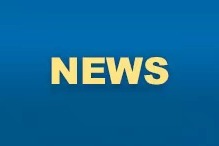Research and development innovations poised to cure more ills

In mid-December, Shanghai Junshi Biosciences raised $394 million after pricing a Hong Kong initial public offering at the bottom of a marketed range.
At the same time, the Shanghai company's new drug Toripalimab was conditionally approved for the treatment of melanoma, becoming the first made-in-China immuno-therapy treatment for cancer to be approved by the National Medical Products Administration.
For Lewis Ho, a partner in the life sciences practice at law firm Loeb & Loeb, the start of the nation's healthcare research and development can be traced to 2006.
At the time, Ho was working with GlaxoSmithKline in Shanghai, and in 2007, GSK was one of the first multinationals to open a research and development center in China, focusing on neurodegenerative diseases.
By 2012, a report by management consultants McKinsey & Company said that 13 of the top 20 global drugmakers had set up R&D centers in China since 2006.
Ho said: "This sparked a new wave of research in the country. Government, academic and commercial organizations needed researchers. Chinese scientists were coming back from abroad and discovering a whole new world. Many of them went on to set up their own companies."
Funding remained a problem, particularly since the Hong Kong Stock Exchange, a big source of capital-raising for many companies in Asia, did not allow listings from companies that had not yet made a profit. But that rule changed last year.
"Many of these companies are maturing. It's a great time for the Hong Kong Stock Exchange to catch the next wave," Ho said.
Hong Kong Exchanges and Clearing posted new rules in April last year, which included allowing listings by biotech companies that had yet to make any money.
As of Dec 24, five such companies had listed on the Hong Kong bourse under the new rules. Another eight are in line for listing consideration.
HKEX has also formed a Biotech Advisory Panel - comprising industry experts - to advise and assist in the review of listing applications from biotech companies applying under the new regimen.
Ho said the first batch of companies that "dipped their toes in the HKEX pond" are safe bets. All of them have products in phase 3 clinical trials.
He expects that as the market matures and investors become more familiar with the biotech scene, more companies with early-stage products will start listing.
Ho said biotech companies on the Chinese mainland are choosing to list in Hong Kong because of the market size and the speed at which listings are approved.
"With the Shanghai Stock Exchange, it is harder to estimate when a listing will be approved, due to regulatory uncertainty, longer processing time and priority treatment for different industries. In Hong Kong, you get a sense of the IPO in about six months to a year," he said.
"More mature markets, like the Nasdaq Stock Exchange (in the United States) are too big for these emerging companies," he added.
"The Chinese government wants to push its biotech industries to succeed. Twelve years ago, there were no Chinese companies in the top 100 - now, there are about three on that list, with interesting products to launch," Ho said.
The country has also been revamping its regulatory system. In September, the China Food and Drug Administration was restructured and renamed the National Medical Products Administration.
The NMPA has introduced faster approvals for new drugs and added a priority list of 48 drugs for rare diseases. Those chosen were approved by the authorities in the United States, the European Union and Japan, but have not been registered in China for the past decade.
"The registration and approval process is happening a lot faster than before. Some companies are finding that they have been given approval two years before they expect it. So now there is a mad scramble to recruit sales representatives and for sales preparation," Ho said.
The inclusion of drugs in reimbursement programs is an area that needs to be improved.
The national reimbursement drug list determines the framework for the drugs covered by insurance at national level. It consists of two categories: List A drugs that are clinically necessary and sufficiently affordable to be fully reimbursed, and List B drugs that are newer, more expensive and require patients to pay 10 to 30 percent of the price.
- 5 dead, 24 injured in suspension bridge accident in Xinjiang
- Mainland warns Lai over pro-independence remarks
- Shanghai Book Fair unveils new initiatives ahead of official opening
- China allocates 100m yuan for post-disaster recovery in flood-hit Guangdong
- Notice calling for a halt to minors participating in food delivery services sparks debate
- 1st anniversary of Badain Jaran World Heritage status celebrated





































